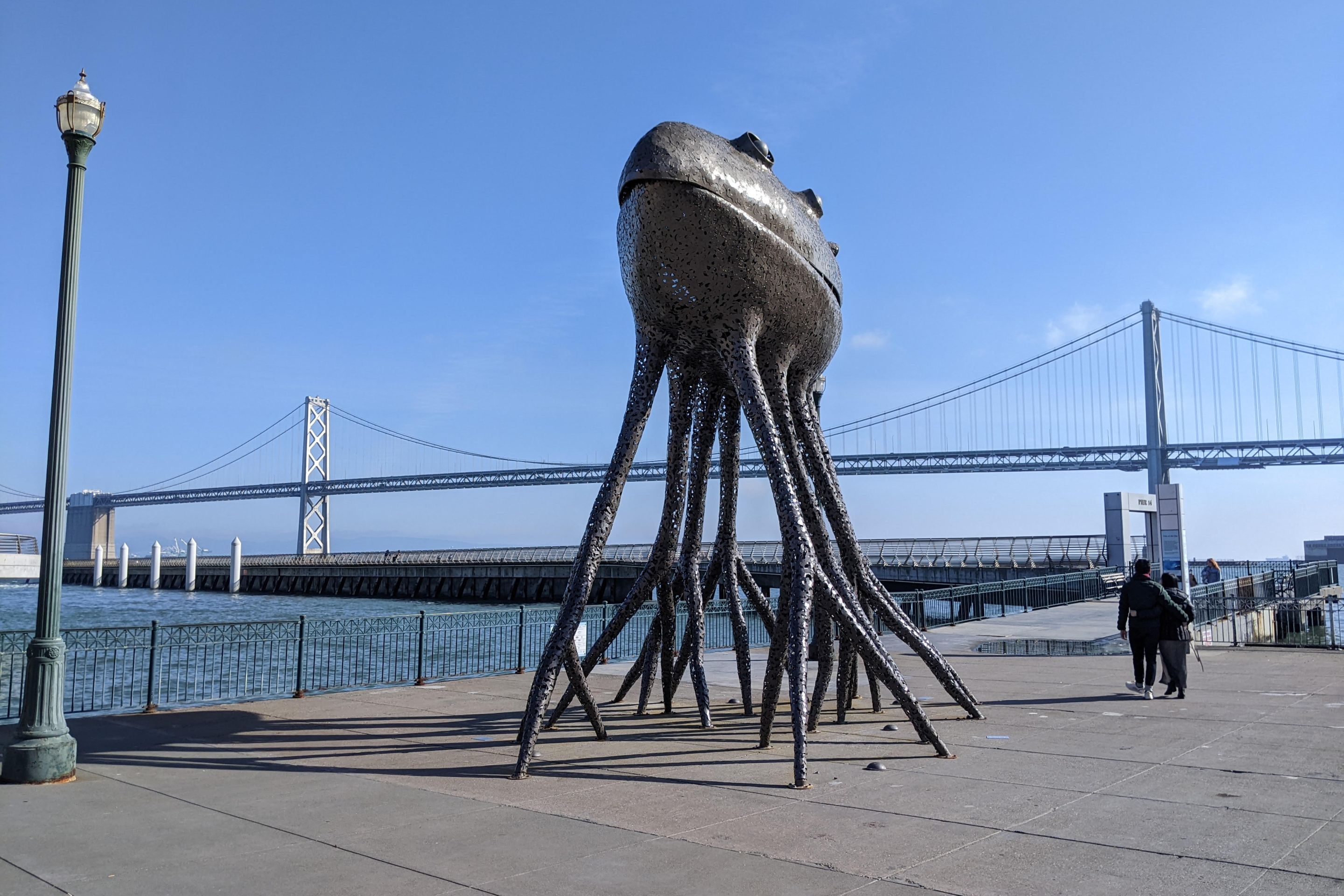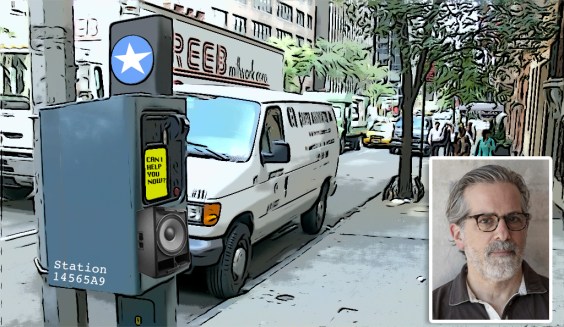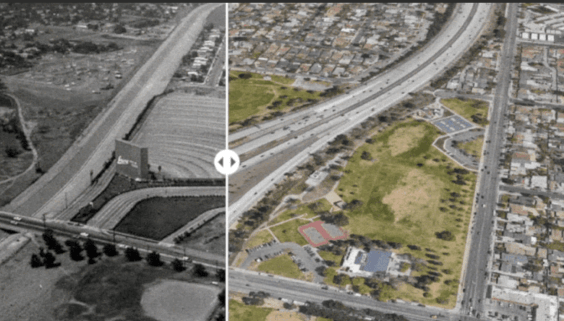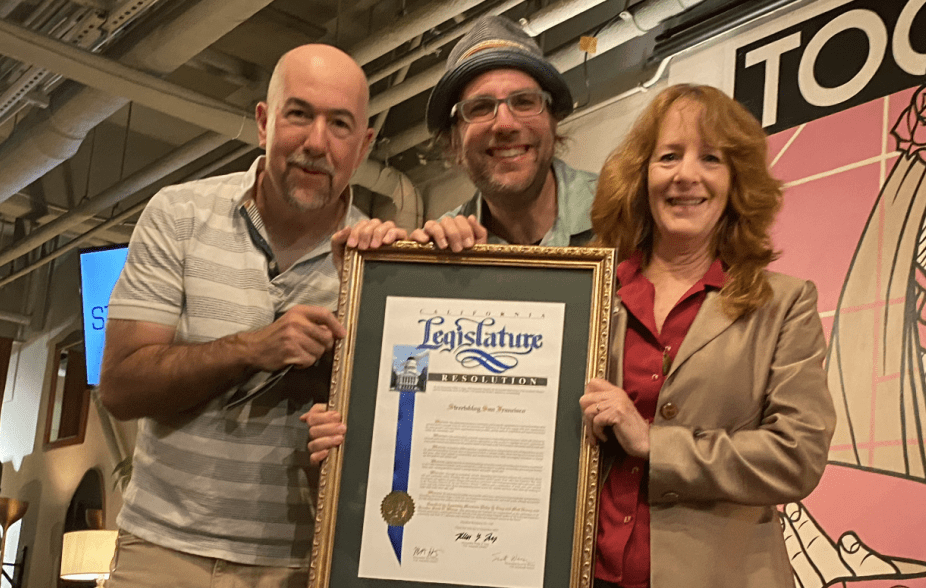 A conceptual rendering the interior of a new BART car with lean bars, courtesy BART
A conceptual rendering the interior of a new BART car with lean bars, courtesy BARTThe first new BART cars won't come online until 2014, but BART's Board of Directors, in a special meeting yesterday, reviewed staff's proposals (PDF) for procuring 700 new cars (there are currently 669 cars system-wide) and the possibility of upgrading them with new technology for customer communication, new interior fabrics and colors, and new modular seat configurations. After months of somber meetings full of protests, arrests, and budget doomsday scenarios, directors were visibly excited to discuss details for improving cars that hearken to the 1970s era, when most were built, and by the possibility of experimenting with innovation and best practices from other major transit systems the world over.
Staff presented the time line for procurement, which begins with the
board workshop and public outreach meetings over the next year and ends in 2024, when the last of the
cars is expected to go into service. The first 200 cars will be paid
for with $1 billion in pledged funds from the MTC in their 2035
regional plan. The $2.4 billion needed to pay for the remaining 500
cars will need to be secured at some point in the future. Of the many particular details available to BART, staff reminded directors that they sought to strike a balance between the capacity needs of the system and comfort for customers.
"This is one of the most exciting things we get to do as a board, plan for our future cars," said Director Gail Murray, who represents primarily suburban riders from Concord, Lafayette, and Orinda.
In choosing details about the interiors on new BART cars, Director Murray underscored the dichotomy between the demographics of BART riders, some who use the system as commuter rail from distant suburban ends, and those who live in urban areas and view the system as a metro subway. She asked staff to consider two kinds of material sets or modular interiors that would serve long-haul riders in a different way than short-distance riders.
It's very important to me and my constituents that we have a lot of seats. So I was trying to find a way of making everyone happy, having the downtown people have lots of room for standing to get on and off quickly, but not sacrificing the seats out in the ends and the suburbs. Those [riders] are our bread and butter because they provide two-thirds of the revenue. I think we can't make them stand that long. It's just not good customer comfort. That's my bottom line.
Staff said they would consider different sets of train interiors, but they were striving to keep the system as uniform as possible to enable any train to run anywhere along the network.
Staff also presented options to the Board that would encourage better distribution of passengers throughout each train car, particularly at rush hours. BART directors will have to decide whether new cars should have three doors or two, with staff clearly leaning toward the extra door. Directors will also decide if the new seats will be transverse (i.e. seats facing toward the front and back of the train) or longitudinal (i.e. facing away from the windows).
 Current rider clustering with two-door cars. Orange is more crowded, yellow less so
Current rider clustering with two-door cars. Orange is more crowded, yellow less soGiven BART's analysis of rider behavior, staff determined that more riders would fill the length of the cars with three doors, rather than clustering around doors and leaving pockets of space in the middle, as currently happens. Capacity difference between transverse and longitudinal seating was marginal.
 3-door car with rider clusters
3-door car with rider clustersAnother consideration directors will weigh is seat width, which is currently more spacious than most commuter and urban rail cars. If BART agrees to forgo some seat width, they will be able to add more seats, particularly in the mid-car longitudinal configurations.
 BART seat widths compared with other subway and commuter rail operators
BART seat widths compared with other subway and commuter rail operatorsBART directors and staff have committed to extensive public outreach over the course of the design phase, which they hope to finish by July, 2009. The design and manufacture of 10 pilot cars will take four years, after which they will be integrated into the current system for a trial period.
While most directors were happy with the staff time line, Director Tom Radulovich urged staff to try experimenting with the interiors of existing cars and test rider reaction in real time before they commit to spending billions on conceptual details. "It might be worth mocking up some of our cars. We could, on two or three cars, take out all the transverse seats and put a long bench there and say that this is what looks like, get people's rolling reaction to this thing."
Radulovich also urged staff to look at the most innovative technologies available for customer interface, such as the flat screen and plasma panels with full graphic capabilities on Barcelona's system, not just the LED line schematic with dots to show current location. "I hope that by 2017 or whenever we order these, LED dot displays will not be 'state-of-the-art,'" he said.





